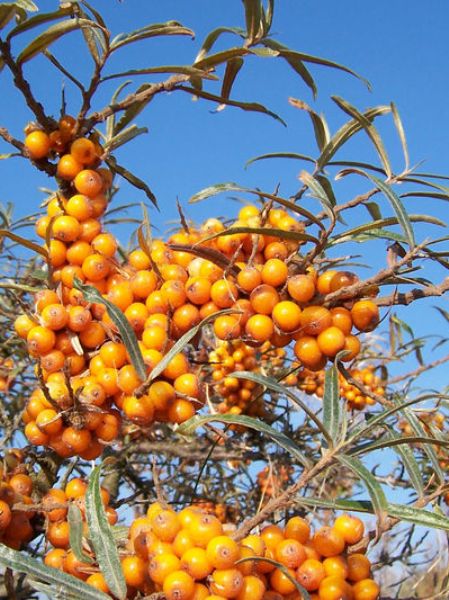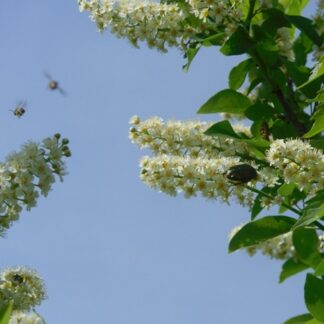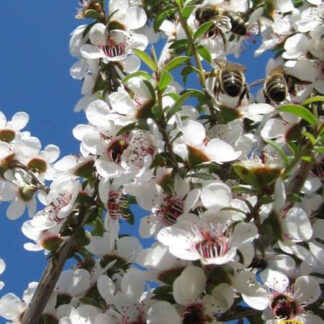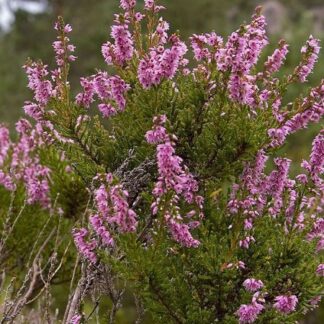Description
Elaeagnaceae (family name)
Forage for pollinators: Copious amounts of Pollen are produced when male flowers ripen, and the wind blows clouds of it to pollinate female trees nearby (it is dioecious and wind pollinated), this pollen is favoured by Honeybees and other bees and insects.
Flowering time: April.
Growing information: NATIVE DECIDUOUS TREE growing to 6m (19ft) by 2.5m (8ft) and hardy to minus 40ºC, it prefers very sandy soil, growing naturally on sand dunes. In flower in April, the seeds ripen from September to November, and the perk for us is its abundance of exceptional bright orange fruit renowned as a super-fruit with high levels of antioxidants, and fatty acids (in the fruit oil), being researched as a food able to treat cardiac disorders, prevent, halt or maybe even reverse the growth of cancers and externally for burns, eczema, radiation injury. It has a vitamin C content – with an average content (695 mg per 100 grams) about 15 times greater than oranges – placing sea-buckthorn fruit among the most enriched plant sources of vitamin C. The flowers are dioecious (individual flowers are either male or female, but only one sex is to be found on any one plant so both male and female plants must be grown if fruit are desired. We offer packs of ten seedlings, mixed sexes (which cannot be sexed until year 3 or 4). It can fix Nitrogen in the soil. (These are pot grown and will grow vigorously once planted)



